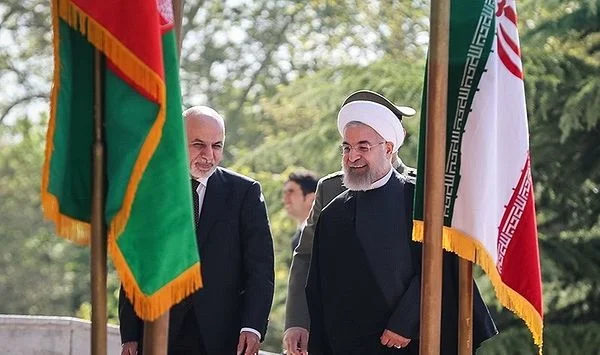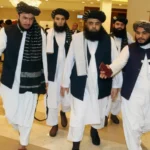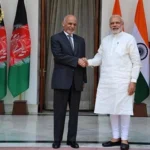Iran holds important strategic, economic, and political leverages in Afghanistan. It has several interests including; securing its eastern border, countering narcotics, and dealing with a large number of Afghan refugees on its soil. Iran’s cultural and religious bond allows it to exert its influence upon key ethnic groups including Tajiks and Hazaras residing in Afghanistan.
Where do Present Iran Taliban Relations Stand?
The Taliban have increasingly asserted themselves by capturing territory and growing political influence in Afghanistan. Hence, now neither the United States nor the Afghan Government can independently deal with the Taliban. However, preventing Afghanistan to descend into chaos once again is also a core regional interest. No one desires Afghanistan to become a safe haven for terrorists once again.
In this regard, Iran is an important regional player which can facilitate the Afghan Peace Process. Currently, Iran hosted the Taliban to exchange views in the US-backed Afghan Peace Process. According to Iranian officials, the visit was a part of Tehran’s policy to reach out to key Afghan parties.
Mullah Abdul Ghani Baradar, the Deputy Chief of Taliban and head of Taliban’s political office in Doha, led the delegation. According to the Taliban official statement, the delegation discussed the relations between the two countries and the current political and security landscape of Afghanistan.
Iranian move to invite Taliban delegation is a clear demonstration to the US administration that Iran is ambitious to play its role as an important regional player to promote peace and stability in Afghanistan.
Hence, Iran is demonstrating its crucial role in the political and security landscape of Afghanistan. In an interview, Iranian Foreign Minister Mohammad Javad Zarif stated that Shi\’ite fighters were “the best forces” to help the Afghan Government in its fight against ISIS.
History of the Iran-Afghan Politics
Afghanistan was important for Iran’s national security even before the 1979’s revolution. Iran’s monarch Raza Shah Pahlavi was concerned with the spread of communism in Afghanistan. Therefore, it facilitated various Afghan parties with economic and military support.
Similarly, Ayatollah Khomeini as a proponent of the spread of the Islamic revolution also opposed the Soviet presence in Afghanistan. Tehran supported several Shi’ite Afghan groups following the Khomeini’s line. The departure of the Soviet Union increased the Iranian involvement in Afghanistan. Tehran supported various Mujahedeen groups fighting to gain control of Afghanistan. After the Taliban’s rapid victory, Iran backed the Afghan opposition movement of the Northern Alliance.
Iran – Taliban Ties
The ideological tussle of the Deobandi influenced Taliban and Shi’ite-dominated Iran has shaped the tense relations between them. Iran’s relationship with the Taliban is highly complicated. This complication is rooted in the common opposition of the Taliban and Tehran towards the US, which compels Iran to pursue the policy of strategic hedging in Afghanistan. The policy aims to support both the Afghan Government and the Taliban, using them against each other when necessary.
A History of Tense Relations
Iran’s relation with the Taliban was often tense. The Iranian government was not always on cordial terms with the Taliban. Following the capture of Mazar-I Sharif, Iran almost went to war with Afghanistan when the Taliban murdered an Iranian journalist and eight diplomats at the Iranian consulate.
The US invasion of Afghanistan in 2001 provided Iran with an opportunity to increase its influence in Afghanistan. Hence, Iran fully cooperated with the US regarding the post-Taliban formation of Afghanistan. Things changed rapidly however in 2002 when President George W. Bush included Iran along with Iraq and North Korea as an “Axis of evil” in his address.
Fearing from a possible US attack on the Iranian homeland from Afghan soil, Tehran provided Taliban improvised explosive devices (IEDs) to support the Taliban’s insurgency movement.
Iran now viewed the Taliban as a mean to weaken the American presence in Afghanistan. However, it did not support the group on the outlay of Afghan stability.
IS-K a Threat to Tehran
The emergence of the Islamic State Khorasan Province (IS-K) once again brought the Taliban and Iran closer. IS-K proved to be more lethal and violent than the Taliban.
As Tehran witnessed shortcomings faced by the Afghan Government to deal with the IS-K, eventually it turned towards the Taliban. The high-level talks between Taliban and Tehran were established which can be seen in former Taliban leader Mullah Muhammad Akhter Mansoor’s death in a US drone attack when he was returning to Pakistan after his long stay in Afghanistan.
These relations became public when Iran stated that the Afghan Government was always notified about these meetings. Iran viewed the presence of IS-K as a serious threat to regional stability. Therefore, it justified its stance by referring to IS-K’s presence in Afghanistan as a destabilizing force for regional stability.
A Shift in Iran’s Policy Pertaining to Taliban
The changing geopolitical realities after 9/11 made it hard for Saudis to support the Taliban against its ally, the US.
Moreover, the opening of the Taliban political office in Doha subjected Qatar to a harsh Saudi stance. This situation helped Iran to move closer to the Taliban. It depicts Iran’s ability to play different roles depending upon the situation and circumstances.
The Shi’ite Hazaras residing in the western fringe of the Hindu Kush in Central Afghanistan also share a deep historical bond with Iran. During the Afghan civil war, Hazaras also looked to Tehran as a counterweight to the Taliban. Iran also hosts millions of Hazara refugees who fled to Iran for a better life.
Iran dispatches young Hazaras to fight on the behalf of Assad’s regime in Syria as a part of the Fatemiyoun Division, with the promises of money and residence in Iran.
Despite the historical Anti-Taliban stance, the Iranian posture is undergoing transformations. Tehran believes that the Taliban will no longer involve themselves in the persecution of the Hazara community. Taliban has also reciprocated and appointed Mawlawi Mahdi Mujahid, a Shi’ite cleric as the Northern District Governor. It is the first time the Taliban has accommodated a Shi’ite leader in its group. This move was done to dispel the notion that the Taliban are predominantly Pashtuns. Taliban’s spokesperson Suhail Shaheen said that it is not that the Taliban have included people from the other communities, instead, they were with us from long ago,” arguing that commanders from the Tajik and Hazara community have played an important role in the Taliban’s operations.
Conclusion
Iran will be an important regional player and it will be a breakthrough if it plays a role in mediation between the Taliban and the Afghan Government. The relation between the Taliban and Iran is still uncertain. Evidently, Iran does not want to see the Taliban in power, a view stated by Iran’s Foreign Minister at an online conclave. However, Iran is also concerned to see a stable Afghanistan as its neighbour. Hence the regional cooperation will be the solution to reach long-lasting peace in Afghanistan.
Your go-to editorial hub for policy perspectives and informed analysis on pressing regional and global issues.





Add a Comment